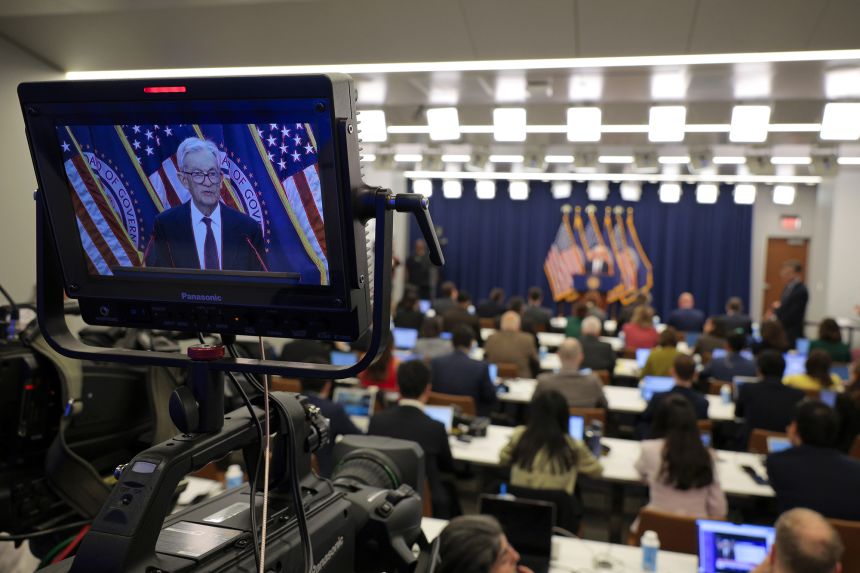The Federal Reserve stepped in last month to safeguard America’s labor market, cutting rates by a quarter point to shore up a slowdown in hiring. But it has another equally important problem still to address — one that has driven up the cost of living in the United States and continues to strain lower- and middle-income households.
Inflation — the other side of the Fed’s dual mandate — still hasn’t returned to pre-pandemic levels and President Donald Trump’s trade war has already pushed up some prices. The Fed came within a hair of its 2% target by the end of last year, but then Trump’s aggressive policies shifted the tectonic plates of the economy.
It’s a thorny issue that has divided policymakers on the rate-setting committee: The central bankers who called for rate cuts beginning in July — all Trump appointees — say they’re hopeful that tariff inflation will be temporary. Other Fed officials, however, aren’t convinced.
“We have been missing our mandate on the inflation side, our objective of 2%, for more than four and a half years,” Cleveland Fed President Beth Hammack told CNBC on September 29. “I continue to be worried about where we are from an inflation perspective.”
The central bank has held interest rates steady for nine months straight in order to gauge the impact of Trump’s tariffs on the economy. But with the labor market now also under some duress, the economic picture has become far more complex.
“There are no risk-free paths now,” Fed Chair Jerome Powell told reporters at a September press conference. “It’s not incredibly obvious what to do.”
“We have to keep our eye on inflation. At the same time, we cannot ignore and must keep our eye on maximum employment. Those are our two equal goals,” he added.

Derailed by Trump
The Fed received broad criticism for being too late to respond to inflation’s eruption in 2021 — a view that some Fed officials, including Powell, have acknowledged. But by mid-2022, Fed officials were correcting course, hiking rates at the fastest pace since the 1980s. And it worked.
By the end of last year, the Fed was on track to pull off the elusive “soft landing” by taming inflation without a recession. The Personal Consumption Expenditures price index, the Fed’s preferred inflation measure, continued to slow in the first half of 2025, reaching a four-year low of 2.3% in April.
Then, in January, Trump began his second term. His erratic trade war has paralyzed businesses, putting hiring plans on hold. It’s also roiled price pressures in the economy. That’s on top of other massive policy shifts, such as mass deportations and cuts to federal funding.
“The economy is in a tug of war,” Philip Straehl, chief investment officer, Americas, at Morningstar Wealth, told CNN.
“The Fed is making a tradeoff for the labor market because the tariff uncertainty is weighing on companies, you see what’s happening with federal workers and the impact of AI on certain industries,” he said.
What it means for everyday Americans
The Fed is expected to lower borrowing costs two more times by the end of the year, according to Fed officials’ latest economic projections, in the hopes that this will help prevent unemployment from surging. Reduced interest rates could also help the many Americans still struggling with the higher cost of living.
Job growth since the summer has been tepid; unemployment among young people and minorities has climbed sharply; and there are now more unemployed people seeking work than there are job openings, according to the latest Labor Department data.
Unemployment remains relatively low, at 4.3%, but research shows that whenever joblessness rises, it typically continues to do so — unless the Fed steps in. To put that into context, a 0.1% change in the unemployment rate equals hundreds of thousands of people.
To make matters more complicated, the government’s shutdown means the suspension of official economic data that provides critical guidance for policymakers on issues like employment, inflation and trade. The September jobs report, due out October 3, has already been delayed and key inflation data due out next week could also be postponed. That puts a blindfold on the Fed.
For now, officials are still widely expected to lower rates by a quarter point at their October 28-29 policy meeting, according to futures.
Meanwhile, Americans are stuck waiting for the economy to right itself after years of high inflation. In August, price hikes were up by about 20% compared to January 2021, according to the Fed’s preferred inflation gauge.
That has resulted in many low-income households cutting back, or trading down for cheaper alternatives, according to retailers. Credit scores are also falling at the fastest pace since the Great Recession with the return of student debt payments.
And the US economy is starting to bifurcate: Executives at major companies such as Walmart, McDonald’s and Target regularly detail in earnings calls the ongoing economic plight of low- and middle-income Americans. The University of Michigan’s latest consumer survey noted that “sentiment for consumers with larger stock holdings held steady in September, while for those with smaller or no holdings, sentiment decreased.”
“There is this big dichotomy between higher-income and lower-income consumers which continues and is a real issue,” Wells Fargo CEO Charles Scharf told CNBC on September 10.
“The low end is spending the money that they have, so their balances are below … pre-pandemic levels; they are living on the edge,” he said.
Americans are also still facing a housing crisis of low supply, high prices and elevated mortgage rates. Trump has said the Fed needs to lower interest rates in order to bring about better affordability for home seekers and has tried to influence the politically independent Fed in order to extract reduced borrowing costs.
Trump said he would fire Powell (and then said he would not), has ousted Fed Governor Lisa Cook (although she launched an immediate legal challenge and remains in her position) and has pressured members of the Board to resign. He even had his top economic adviser take a leave of absence in order to fill a vacant slot on the Fed’s powerful governing Board.
Trump has also said he intends to name a new Fed chair this year, months before Powell’s term ends in May, an unusual step that effectively introduces a “shadow” leader at the central bank, diluting Powell’s power as consensus builder. At least two voting members of the rate-setting committee are under contention for the role, and have spoken out in favor of aggressive rate cuts.
That all leaves the central bank facing a battle on multiple fronts: Protecting its independence while preventing both inflation and unemployment from surging in the year ahead amid continued economic uncertainty (and a data blackout).
“There is not a generic playbook for how the central bank should respond to a stagflationary shock,” Chicago Fed President Austan Goolsbee said at an event in New York in April.
